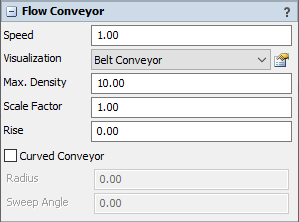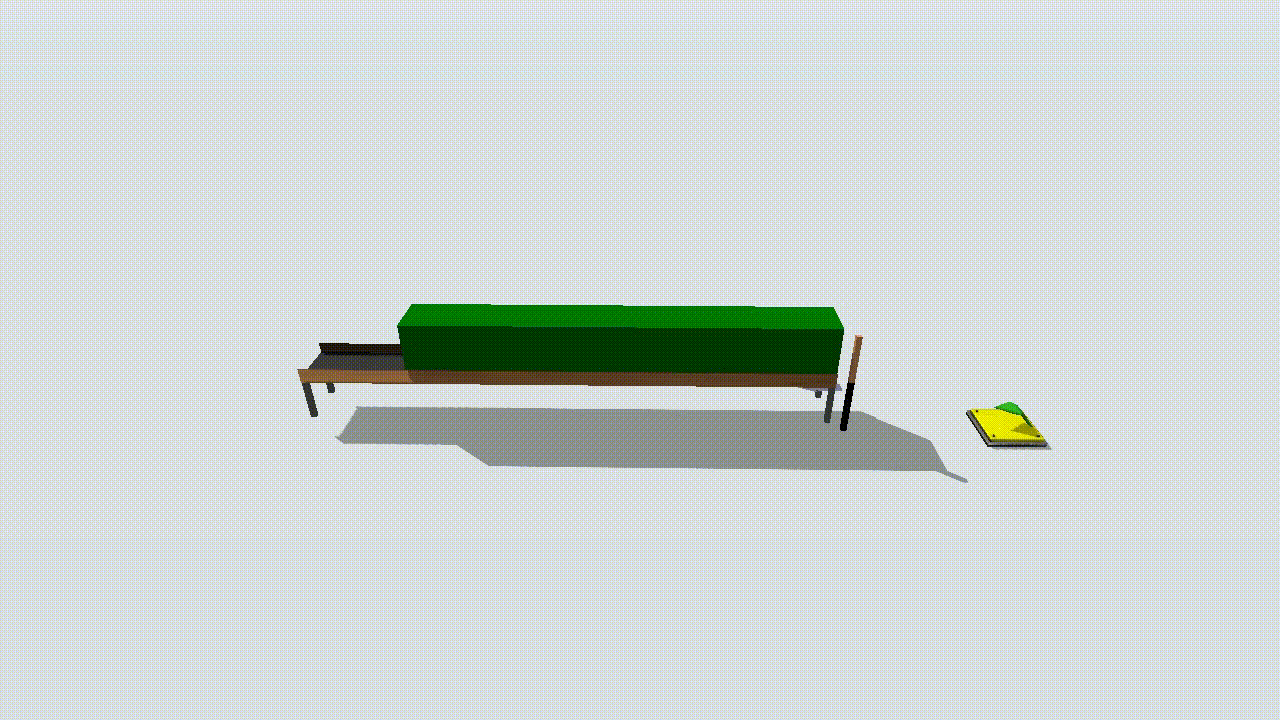The Flow Conveyor Panel
The Flow Conveyor panel is shown for flow conveyors. For legacy flow conveyors in upgraded models, please see the legacy flow conveyor documentation.

The following properties are on the Flow Conveyor panel:
Conveyor speed
The speed of the conveyor determines how fast products will reach the end, but also how tall they will be on the conveyor. The actual size of the conveyor is used, so an inflow of 100 per time unit on a conveyor of 20 length units wide will be 5 length units tall.
Visualization
Defines the conveyor's visualization. This can be a globally defined visualization, or a custom visualization that applies only to the current conveyor. The visualization's properties can be changed by clicking the properties button to the right of the dropdown.
Maximum density
This setting determines how tall product may "stack up" against the end of the conveyor before it starts "crawling back" towards the start. By taking into account the width of the conveyor, the maximum density can be converted into a maximum product height and vice versa. The image below shows how having a relatively small maximum density will make the conveyor fill up relatively quickly.

Scale factor
Scales the height of the conveyor contents (not the actual conveyor object). In the example given under "conveyor speed": if you would set the scale factor to 0.2, the product on the conveyor would only be drawn 5 × 0.2 = 1 length unit tall. This may be useful if you have flows that would otherwise be so small that you cannot see any differences in height or which products are stacked; or when the speed is so low and volume so high that there would be an unrealistically tall "wall" of product running over the conveyor.
Conveyor rise
This is how many length units the conveyor rises along its complete length; in other words, what the height difference is between the start and end of the conveyor.